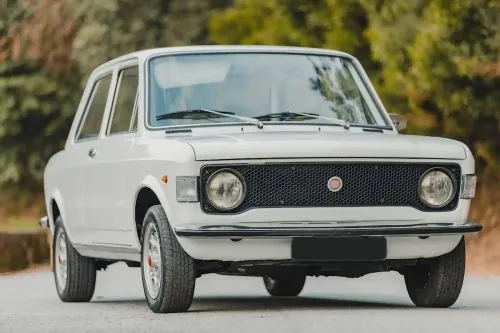A €80,000 Transit!
Many enthusiasts are rightly calling for more visibility for historic goods vehicles. After all, most of them have had more social and cultural impact than many passenger vehicles.
Who doesn't remember the fishmonger's Citroën HY, the CTT or TLP's Renault 4F, the grocery store's Toyota Hiace, the Morris Sherpa or the Peugeot 504 used by almost every company?
Ford commercials have always had a strong presence in Europe, with Transit at the forefront. Born in 1965, as a successor to the Taunus Transit and Thames, the Transit had an American-inspired design and was much wider than its predecessors and rivals, which gave it unbeatable load space.
To be able to place the engine outside the passenger compartment without greatly extending the dimensions of the body, Ford opted for the V4 Essex and Cologne (Taunus), which were very compact. However, to adopt the six-cylinder and diesel engines, he created the body that would be nicknamed “pig nose”, so called because of the protruding grille and which would be the most popular in Portugal, where diesel made up for it.
The diesel engine was originally a Perkins, but criticism of its performance and robustness led to Ford using its own York engine from 1972 onwards.
Another added value of the Transit was the multiplicity of bodies, from vans to pick-ups, minibuses, motorhomes and the like. But one of the most popular bodies has always been the long, double-wheeled chassis. For some reason, automatic enthusiasts associate the twin wheel flares with something strangely sporty. But there is another explanation…
In the 70s, before the era of big trucks and motorhomes, every self-respecting sports team had a dual-wheel Ford Transit to pull their competition cars. Of course this includes the mythical Diabolique. In this specific case, it was precisely a long MkI, with double wheels and a V4 engine, with a beautiful decoration, in line with what Miguel Oliveira's team accustomed us to in competition models.
There's also the Transit Supervan factor... In a spectacular publicity stunt, Ford created a Ford Transit based on the chassis of a GT40, with the engine mounted in a central position and supercharged. The 5.0 V8 of this “silhouette van” had Gurney-Weslake heads and produced more than 400 hp. Almost everything had to be redesigned, including the front suspension, which used components from the Jaguar XJ6. The Supervan first appeared at the 1971 Thruxton Easter Race Meeting and was a media success.
Despite these and other reasons justifying enthusiasts' magnetism towards the Ford Transit, no one would ever guess that in 2022 a Transit could change hands for 80,000 euros! There is no mistake. It was 61,000 pounds plus commissions and taxes that guaranteed the happy (and a little crazy) buyer to take home a copy that, admittedly, is very special...
This example is from the MkI face-lift, which arrived on the market in 1971 and is distinguished by its smaller grille with rounded corners. It has a long chassis and double wheels, in a beautiful light blue tone. According to the auctioneer, this example was a special order, so it has unusual features, such as a side loading door on both sides, a tilting rear gate (instead of a double vertical opening), special perforated vinyl seats and a dashboard with wood-colored vinyl finish and snare drum with overdrive. It is also equipped with an eight-track cartridge reader and special buffers of the time. The icing on the cake is the fact that it only records 11,000km that are believed to be real.
Having already been awarded in some events, the Transit attracted a lot of attention at the Silverstone Auctions auction, where it was presented with no reserve value, to reach this record figure, which will take a long time to overcome.
It is a historic event that marks Transit's transition from “princess of fairs” to “queen of salons”.









